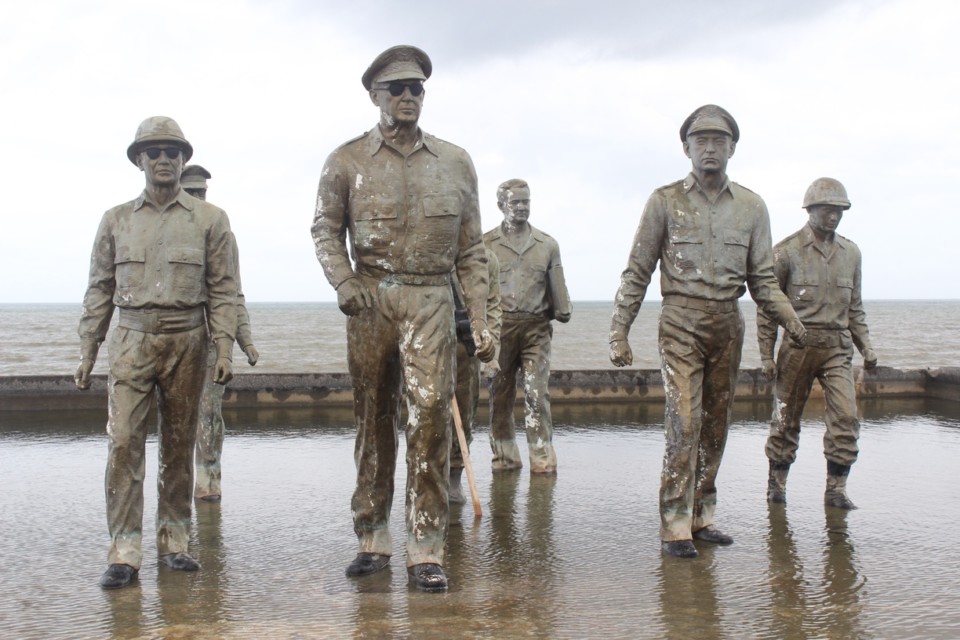On December 8, 1941, nine hours after the attack on Pearl Harbor (the Philippines is on the Asian side of the international date line) the Japanese began their assault on the Philippines.
The combined American-Filipino army was defeated in the Battle of Corregidor in April of the following year, but guerrilla resistance continued throughout the war. Uncaptured Filipino army units, communist insurgents and American agents all played a role. Due to the geography of the country, the Japanese never occupied many islands and control over the countryside and smaller towns was often tenuous at best.
Two years later, US forces began the liberation of the Philippines. This was known as the Battle of the Philippines or Operation Musketeer, and it began with the landing of the US Sixth Amy on the island of Leyte on October 20, 1944.

The Sixth Army was supported by the US Navy, and the Imperial Japanese Navy attacked. But the Japanese seriously underestimated the strength of the US Navy, and their own was defeated at the Battle of Leyte Gulf over four days, from October 23 to October 26. The Imperial Navy lost four aircraft carriers, many cruisers, battleships, and destroyers. It was so weakened that it never fought a major battle again.
The Sixth Army advanced east, supported by the Fifth Air Force, and the Japanese rushed reinforcements to the island. It was the rainy season. It was very hot and humid, and the terrain was difficult. Philippine guerilla forces, under Ruperto Kangleon, helped the American forces. They attacked enemy patrols, blew up bridges, sabotaged supplies and ammunition depots, kept roads clear for American troops, and kept the Americans informed about Japanese troop movements.
US and Philippine Commonwealth forces were making steady progress liberating territory when the Japanese forces in the Philippines were ordered to surrender by Tokyo on August 15, 1945, after the dropping of the atomic bombs on Hiroshima and Nagasaki. As elsewhere throughout the region, some regional commanders refused to accept the order, and some Japanese troops remained at large until members of the royal family were sent out to confirm the surrender.
Throughout the campaign, the US lost 16,303 men. The Japanese losses are estimated at 336,352. Filipino losses have never been fully accounted for.

Comments are closed.